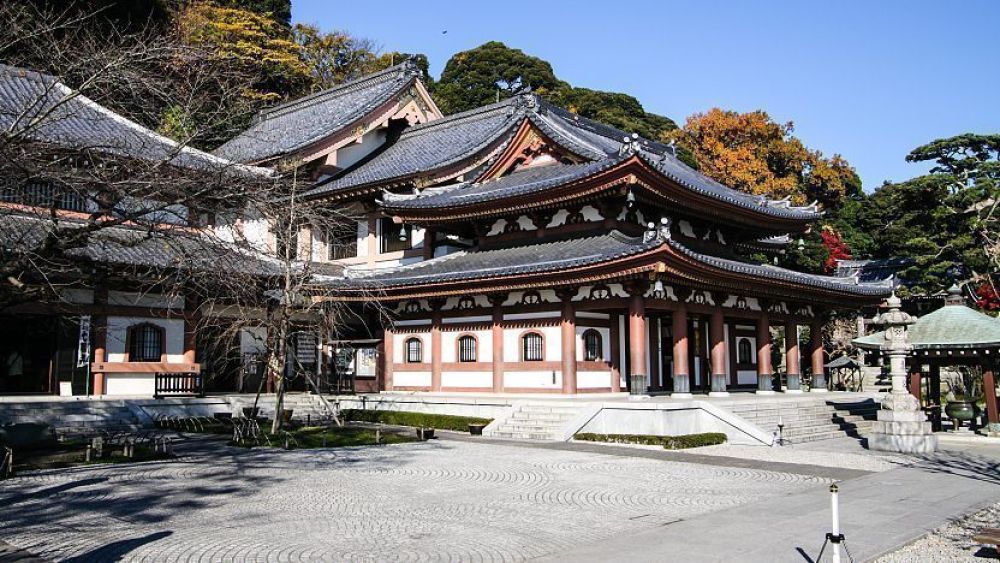

Located in the tranquil coastal city of Kamakura, Japan, the Hasedera Temple is a historic site that invites visitors into a serene world steeped in spiritual tradition. Known for its striking views and religious significance, Hasedera, which is dedicated to the goddess Kannon, has been a focal point for pilgrims and tourists alike for centuries.
The origins of Hasedera Temple date back to the 8th century when it is believed to have been founded. The temple has a legendary narrative involving a sacred tree that was used to carve two statues of the Eleven-Headed Kannon. It stands as part of the Jodo-shu sect of Japanese Buddhism and is a destination for those wishing to pay respect to the goddess of mercy.
Over the years, Hasedera's idyllic location and its cultural heritage have not only made it a pilgrimage site but also a hotspot for those seeking to experience Japan's historical beauty. Visitors often marvel at the temple's impressive wooden architecture, intricate carvings, and the famed Jizo statues that represent the guardians of children.
During the Edo Period (1603-1868), with the bolstering of road networks and the shogunate's encouragement of travel for religious purposes, tourism in Kamakura, and by extension at Hasedera Temple, saw significant growth. Pilgrimages to the temple were popular among the people, and it became known as a “flower temple” due to its lush seasonal gardens.
With the advent of the Meiji period and the modernization of Japan, Hasedera continued to attract visitors who were interested in the confluence of nature, art, and spirituality. The temple's bamboo groves, ponds, and the famous viewing platform offering panoramic views of the coastal city of Kamakura became iconic attractions.
In recent times, Hasedera Temple has seen shifts in tourism trends. There is a growing interest in "experience-based" travel, where tourists aim to immerse themselves in the local culture and spiritual practices of the destinations they visit. At Hasedera, visitors can engage in shakyo (the hand-copying of sutras) or partake in meditation sessions, bridging the gap between being a tourist and a pilgrim.
Another contemporary trend is the rising popularity of "seasonal tourism". Hasedera is particularly renowned for its lush seasonal flora. Visitors flood the temple grounds during different times of the year to witness the hydrangeas in early summer or the brilliant maple leaves in autumn. The yearly hydrangea path, which leads to a stunning view of the sea, is a renowned highlight.
Moreover, the advent of social media has also given Hasedara a place on the global stage, with countless visitors sharing the temple's breathtaking sights online. This digital exposure has prompted an increase in international tourists seeking out the temple's tranquility and beauty.
As tourism continues to evolve, Hasedera Temple is also considering sustainability. Efforts to preserve the natural and historical integrity of the temple, while accommodating the growing number of visitors, are at the forefront of their concerns. The temple management endeavors to balance conservation with visitor satisfaction, ensuring future generations can enjoy the allure of this spiritual haven.
In conclusion, Hasedera Temple's rich history as a beacon for tourism continues in modern times, with evolving trends shaping the way visitors experience this timeless cultural treasure. As it carefully navigates the modern demands of tourism, it retains its essence as a sanctuary of peace and beauty, inviting all who visit to take part in its storied legacy.